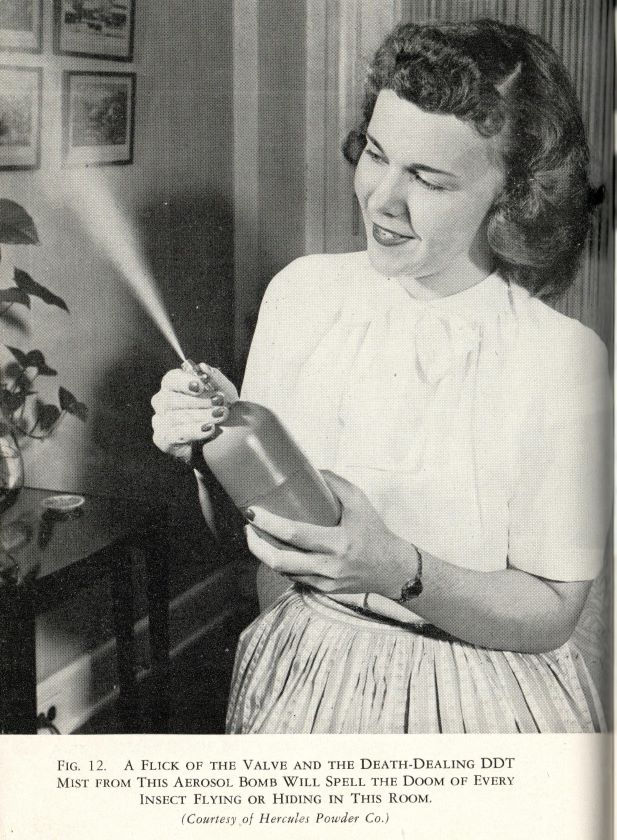
A little-known fact about the rise of chemical-intensive agriculture in the United States is that it was motivated by doomsday fears. Pesticide-promoting literature, in particular, has always relied on a strong fear appeal. It’s a savvy marketing tactic that convinces the consumer that a deadly poison is essential to save lives—and throughout the twentieth century, it’s been very effective.
Take the early history of DDT, for example. DDT was developed by the Swiss chemical company Geigy during World War II and was used by the US military to combat a typhus epidemic in Naples, Italy. Between 1942 and 1945, American scientists did dozens of studies on DDT and discovered that it accumulated in the fatty tissues of animals and humans; was secreted in milk; and killed fish, frogs, poultry, and wild birds. “The damaging possibilities of the broadcasting of DDT outdoors call for restraint and utmost caution in its use,” the Audubon Society warned in 1946. “Let us not open another Pandora’s Box.”
But despite its known human health and environmental impacts, DDT and a subsequent flood of even more toxic chlorinated hydrocarbon and organophosphate pesticides were released to the public after World War II. Many people were understandably skeptical of using DDT at first, so the chemical industry launched a marketing campaign to convince consumers that the pesticide was harmless. “Even if you took a bath in the stuff—although we don’t recommend it—it is highly unlikely that you would be in any danger,” chemical industry scientists O.T. Zimmerman and Irvin Lavine wrote in their 1946 book DDT: Killer of Killers. “Does your dog have fleas? Or do you have lice in your pants?...Take a powder—literally—a DDT powder, and sprinkle it in your pooch’s fur or in your underwear.”
When the U.S. House of Representatives held a series of hearings about the safety of pesticides in 1950, agricultural scientists and chemical manufacturers argued that pesticides were essential. “Fruit and vegetable insects must be controlled by insecticides or the grower will go out of business and the consumer would suffer,” warned Fred Bishopp of the USDA’s Bureau of Entomology and Plant Quarantine. “We must recognize the fact that these materials are not used by the grower through desire but out of dire necessity,” added Lea Hitchner of the National Agricultural Chemicals Association. “Either we control the bugs and blights—or, like other nations in history, we shall go hungry,” agreed J. T. Sanders of the National Grange. “We can make no truce with the insect world,” warned Samuel Fraser of the International Apple Association. “If we appease, we die.”
The fear appeal was successful in 1950. It convinced the legislators that the benefits of pesticides far outweighed their seemingly minor risks. And it marked the beginning of a scientific consensus that it was impossible to farm without chemicals. If anyone dared to suggest that spraying food with known poisons might not be a great idea, the promoters of pesticides argued that the alternative would be a deadly dystopian future of disease and starvation. In order to emphasize, as Fred Bishopp claimed, that “the advantages gained far outweigh the hazards,” they had to paint a picture of life without pesticides that was far more dangerous than wildlife, animal, and even a few human deaths. The result was the scariest doomsday scenario they could come up with. And fear of that doomsday was the biggest rhetorical tool that scientists used to defend pesticides for the next fifty years.
Comments